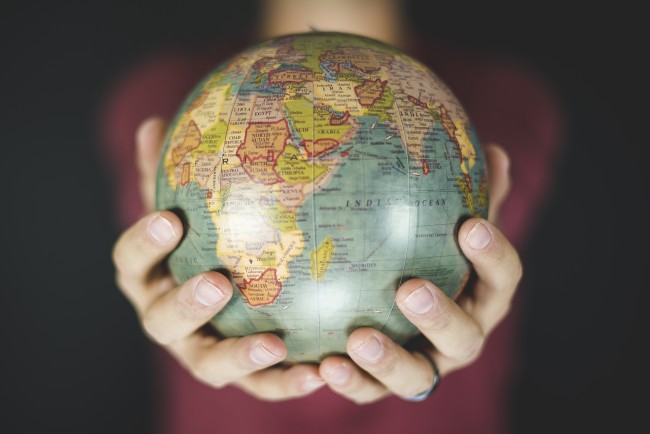Our world is home to a diverse array of countries, each with its own unique history, culture, and population. In a world full of vast countries with diverse landscapes and cultures, it’s fascinating to explore the smallest nations that exist.
These countries may be small in size, but they boast rich histories, unique cultures, and picturesque landscapes. Let’s dive into the top 10 smallest countries in the world by area in 2024 and learn a little about each one.
Smallest Countries in the World
1. Vatican City (0.44 km²)
The Vatican’s rich history includes the construction of St. Peter’s Basilica in the 16th century and the election of Pope Francis in 2013.
The Vatican Museums showcase centuries of artistic and cultural heritage, making it a popular destination for millions of visitors annually.
Vatican City, a city-state within Rome, Italy, was established in 1929 following the signing of the Lateran Treaty. It is the global center of the Roman Catholic Church and home to approximately 800 residents.
2. Monaco (2.02 km²)
Monaco, a sovereign city-state on the French Riviera, has a population of approximately 39,000. The Grimaldi family has ruled the principality since 1297, and today, Prince Albert II is its reigning monarch.
The nation’s history includes periods of French and Italian rule, as well as the establishment of the Monte Carlo Casino in 1863, which helped to shape its glamorous image.
Monaco’s culture is a blend of French and Italian influences, evident in its cuisine, festivals, and architecture.
3. Nauru (21 km²)
Located in the Pacific Ocean, Nauru is a small island nation with a population of roughly 10,000. First settled by Micronesians and Polynesians around 1000 BC, Nauru was later colonized by Germany and then administered by Australia, New Zealand, and the United Kingdom.
The country got independence in 1968. Nauruan culture includes traditional practices such as weaving and singing, and the nation’s official languages are Nauruan and English.
4. Tuvalu (26 km²)
Tuvalu, an island nation in the Pacific Ocean, is home to approximately 11,000 people. The islands were first settled by Polynesians around 3000 years ago and were later discovered by Europeans in the 16th century.
Tuvalu became a British protectorate in 1892 and gained independence in 1978. The nation’s rich Polynesian culture is expressed through traditional music, dance, and crafts. The official languages are Tuvaluan and English.
5. San Marino (61 km²)
San Marino, a landlocked microstate in Southern Europe, has a population of around 34,000. Founded in 301 AD by Saint Marinus, it is one of the world’s oldest republics.
The country has maintained its independence throughout history, despite being surrounded by Italy. San Marino’s culture is heavily influenced by Italian traditions, particularly in cuisine and the arts. The official language is Italian.
6. Liechtenstein (160 km²)
Liechtenstein, a small alpine country between Switzerland and Austria, has a population of approximately 39,000. Established in 1719, it became a sovereign nation in 1806.
The country’s history includes a close relationship with Austria, which ended after World War I, leading to stronger ties with Switzerland. Liechtenstein’s culture combines Swiss and Austrian influences, and its official language is German.
7. Marshall Islands (181 km²)
Located in the Pacific Ocean, the Marshall Islands is an island nation with a population of around 59,000. First settled by Micronesians around 2000 BC, the islands later became a German colony, followed by Japanes occupation, and eventually a U.S. administered territory.
The Marshall Islands gained independence in 1986. The nation’s culture is rooted in Micronesian traditions, including handicrafts, dance, and music. The official languages are Marshallese and English.
8. Saint Kitts and Nevis (261 km²)
Saint Kitts and Nevis, a Caribbean island nation, is home to approximately 53,000 people. The islands were first inhabited by indigenous peoples before European colonization in the 17th century.
The nation got independence from the United Kingdom in 1983. Saint Kitts and Nevis boasts a vibrant Afro-Caribbean culture, with music, dance, and cuisine reflecting its diverse history. The official language is English.
9. Maldives (298 km²)
The Maldives, an Indian Ocean archipelago nation, has a population of around 543,000. Inhabited for over 2,500 years, the Maldives has a rich history marked by Buddhist, Islamic, and European influences.
The nation became a republic in 1968 after gaining independence from the United Kingdom. Maldivian culture is an amalgamation of South Asian, African, and Arab elements, with Dhivehi as the official language.
10. Malta (316 km²)
Malta, an archipelago in the Mediterranean Sea, is home to approximately 514,000 people. The islands have been inhabited since prehistoric times and have a complex history, including periods of Phoenician, Roman, Byzantine, Arab, Norman, and British rule.
Malta got independence from the United Kingdom in 1964 and became a republic in 1974. Maltese culture is a blend of Mediterranean influences, and the official languages are Maltese and English.
Conclusion:
Despite their small sizes, these nations offer a wealth of history, culture, and beauty. From the spiritual center of Vatican City to the tropical paradise of the Maldives, each of these smallest countries in the world has a unique story to tell and fascinating experiences to offer.

